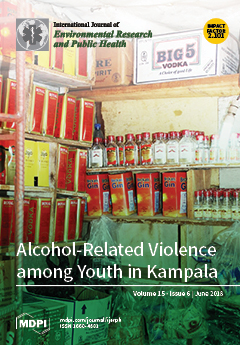Background: Particulate air pollution, especially PM
2.5, is highly correlated with various adverse health impacts and, ultimately, economic losses for society, however, few studies have undertaken a spatiotemporal assessment of PM
2.5-related economic losses from health impacts covering all of
[...] Read more.
Background: Particulate air pollution, especially PM
2.5, is highly correlated with various adverse health impacts and, ultimately, economic losses for society, however, few studies have undertaken a spatiotemporal assessment of PM
2.5-related economic losses from health impacts covering all of the main cities in China.
Methods: PM
2.5 concentration data were retrieved for 190 Chinese cities for the period 2014–2016. We used a log-linear exposure–response model and monetary valuation methods, such as value of a statistical life (VSL), amended human capital (AHC), and cost of illness to evaluate PM
2.5-related economic losses from health impacts at the city level. In addition, Monte Carlo simulation was used to analyze uncertainty.
Results: The average economic loss was 0.3% (AHC) to 1% (VSL) of the total gross domestic product (GDP) of 190 Chinese cities from 2014 to 2016. Overall, China experienced a downward trend in total economic losses over the three-year period, but the Beijing–Tianjin–Hebei, Shandong Peninsula, Yangtze River Delta, and Chengdu-Chongqing regions experienced greater annual economic losses.
Conclusions: Exploration of spatiotemporal variations in PM
2.5-related economic losses from long-term health impacts could provide new information for policymakers regarding priority areas for PM
2.5 pollution prevention and control in China.
Full article





